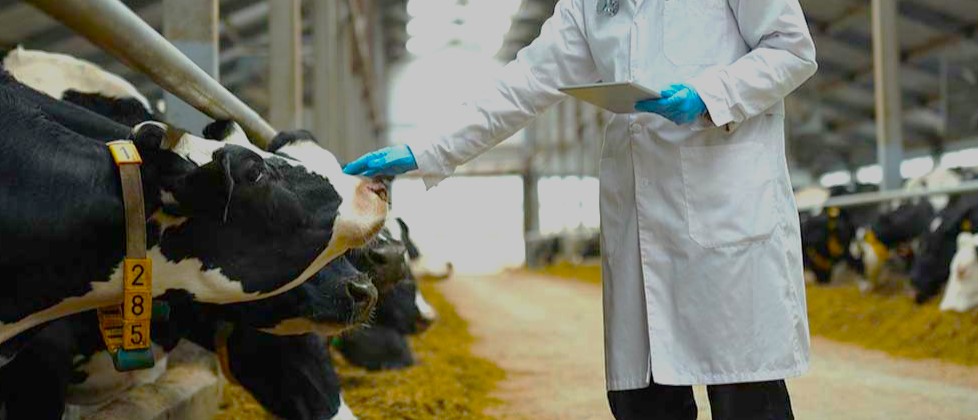Common Challenges in Livestock Management
Livestock managers face many challenges, from feeding and health management to breeding and productivity. Disease outbreaks, fluctuating feed costs, and environmental impacts are just a few hurdles that require thoughtful, informed approaches. Furthermore, locating reliable sources for used livestock equipment can add another layer of complexity. The market for livestock equipment is vast, and not all available pieces meet the necessary quality and functionality standards. Thus, livestock managers must be well-prepared, resourceful, and proactive, ensuring they have access to the equipment and resources that can support their operations effectively.
Innovative Solutions for Modern Livestock Management
With technological advancements, several innovative solutions have been introduced to ease the burden on livestock farmers. Tools for precision livestock farming allow for more efficient use of resources and improved tracking of animal health. Automated feeding systems, wearable health monitors, and data-driven herd management software are increasingly vital to modern livestock farming. These innovations ensure that animals receive the appropriate nutrition and care at the correct times, enhancing productivity and well-being. For example, it is possible to configure automated feeding systems to distribute feed precisely, minimizing waste and guaranteeing that each animal gets the appropriate quantity.
Utilizing Online Resources and Tools
Livestock managers have many online resources to help them stay informed and make better decisions. Websites like FA-Mag provide valuable insights into the latest technologies and practices in the industry. These resources are instrumental in adopting modern methods that enhance productivity and sustainability in livestock management. These platforms offer abundant information, from blogs and articles to webinars and online courses. Participating in online forums connected to these websites can offer invaluable peer-to-peer advice and tips, helping farmers troubleshoot specific issues and optimize their operations.
Implementing Sustainable Practices
Sustainability is becoming a crucial element in livestock management. Practices such as rotational grazing, efficient water use, and organic feeding contribute to the health of the environment and the livestock. These practices help maintain ecological balance and ensure long-term productivity and profitability. Sustainable methods reduce the environmental footprint of farming operations and help create a more resilient agricultural system. As consumers become more aware of ecological issues, adopting sustainable practices can improve the farm’s marketability and meet the growing consumer demand for responsibly farmed produce.
Rotational Grazing
Rotational grazing involves moving livestock between different pastures to allow forage plants to recover. This practice maintains pasture health by preventing overgrazing, which can degrade soil quality and reduce forage availability. Over time, rotational grazing improves soil structure and increases biodiversity, ultimately leading to better nutrition and health for the livestock. This system also allows farmers to utilize their land more efficiently, making the most of natural resources and enhancing the sustainability of their farming practices.
Water Use Efficiency
Efficient water use practices, such as monitoring water quality and automated watering systems, ensure that livestock can access clean water, reducing the risk of waterborne diseases and improving overall herd health. Computerized systems can keep track of water levels and quality in real-time, alerting farmers to potential issues before they become serious problems. This proactive approach helps ensure that animals stay healthy and productive and conserves water by reducing waste.
Financial Considerations and Planning
Effective financial management is critical in livestock farming. With the high feed, healthcare, and equipment costs, strategic planning and financial literacy are necessary. Utilizing budgeting tools and staying informed about market trends can help maintain a profitable operation. Diversifying income streams and seeking grants or subsidies can provide additional financial stability. Financial planning tools can consider various scenarios, provide forecasts, and help managers make more informed decisions. They can also identify areas where expenses might be cut, or investment should be increased, optimizing the overall financial health of the farm.
Budgeting Tools
Digital budgeting tools can help farmers track spending and identify areas for cost reduction. These tools often provide detailed reports and forecasts, making planning for future investments and costs more manageable. Sophisticated budgeting software can also integrate with other farm management tools to provide comprehensive financial insights, combining data on herd health, feed costs, and market prices to offer a complete picture of the farm’s economic status.
Diversifying Income Streams
Exploring alternative sources of income, such as agritourism or selling value-added products, can provide additional financial support for the farm. Agritourism, for example, allows farmers to host tours, workshops, and on-farm events that generate revenue and educate the public about farming practices. Selling value-added products like cheese, yogurt, or wool can also increase profitability. By diversifying, the farm can reduce the risks linked to market volatility and have a consistent income, decreasing its susceptibility to changes in the prices of its main products.
The Role of Community and Knowledge Sharing
The livestock farming community plays an essential role in knowledge sharing and support. Engaging in discussion boards, going to trade shows, and working together with other farmers might yield insightful information and solutions for shared problems. Farmers can gain new perspectives, learn about emerging practices, and share their experiences by networking with industry experts and peers. Building a strong community network benefits new and experienced livestock managers, fostering a collaborative environment for innovation and problem-solving. Moreover, engaging with the community helps create a support system that can offer assistance and advice during times of need.
Looking Ahead: Future of Livestock Farming
The future of livestock farming looks promising with continued advancements in technology and sustainable practices. Embracing innovations and remaining adaptable will be vital to thriving in an ever-evolving industry. As we progress, the focus should remain on improving efficiency, animal welfare, and environmental stewardship. Integrating new technologies with traditional practices can lead to more robust and responsive farming systems better equipped to handle future challenges. By prioritizing ethical and ecological standards, livestock farming can meet the population’s growing demands while maintaining a balance with nature.




